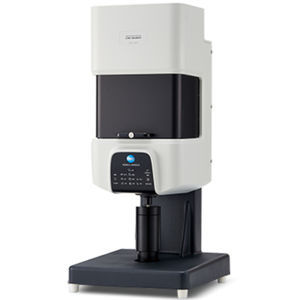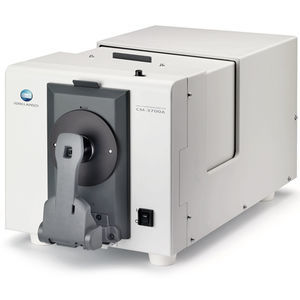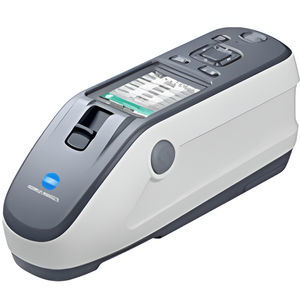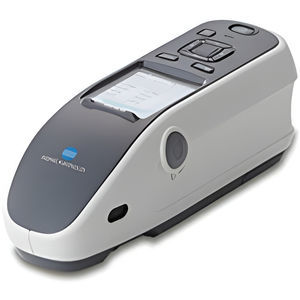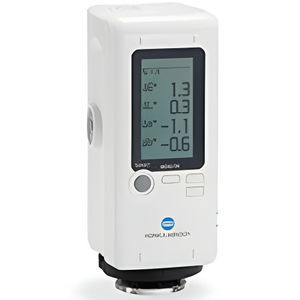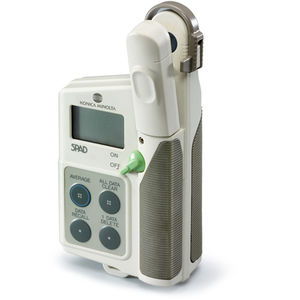
- Detection - Measurement
- Optical and Acoustic Measurements
- Portable spectrodensitometer
- Konica Minolta Sensing

- Products
- Catalogs
- News & Trends
- Exhibitions
Portable spectrodensitometer FD-5
Add to favorites
Compare this product
Characteristics
- Options
- portable
Description
Even on substrates with fluorescent whitening agents, this next-generation measurement tool streamlines color adjustment in printing.
Provides accurate evaluation, even on substrates with fluorescent whitening agents
As digital methods are increasingly used in graphics-related industries, there is a growing reliance on numerical control of the quality of printed materials, being both easier and faster than the visual evaluation the human eye can manage. However, since ultimately the final materials are intended to be seen by the human eye, the final measurement results must closely resemble the human eye results of visual evaluation.
The fact that the paper on which materials are printed influences the final viewed color is a potential problem. Fluorescent whitening agents (FWAs) are contained in many kinds of paper used for printing to give paper a brighter appearance, which can have a particularly large effect on the color of the printed materials when they’re viewed under Illuminant D50*1. For that reason, ISO 13655-2009*2 defined Measurement Condition M1 as having illumination corresponding to CIE Illuminant D50, which minimizes differences in measurement results due to paper fluorescence. This effect was very difficult to measure with conventional, previously available, handheld spectrodensitometers.
By utilizing Konica Minolta’s original VFS (Virtual Fluorescence Standard) technology, the FD-5 Spectrodensitometer offers unique solutions to this problem, enabling color evaluation while taking into consideration the fluorescence of the paper under Illuminant D50, the printing industry’s standard light source used for color evaluation.
Catalogs
Related Searches
- Monitoring analyser
- Desktop analyzer
- Automated analyzer
- Portable analyser
- Calibration analyser
- Konica Minolta spectrophotometer
- Control analyser
- Frequency response analyzer
- Konica Minolta visible spectrophotometer
- Konica Minolta benchtop spectrophotometer
- UV spectrophotometer
- Konica Minolta color spectrophotometer
- Konica Minolta USB spectrophotometer
- Optical analyser
- Konica Minolta color measurement spectrophotometer
- Color meter
- Dynamic analyser
- Konica Minolta spectroradiometer
- Absorption spectrophotometer
- Konica Minolta glossmeter
*Prices are pre-tax. They exclude delivery charges and customs duties and do not include additional charges for installation or activation options. Prices are indicative only and may vary by country, with changes to the cost of raw materials and exchange rates.






